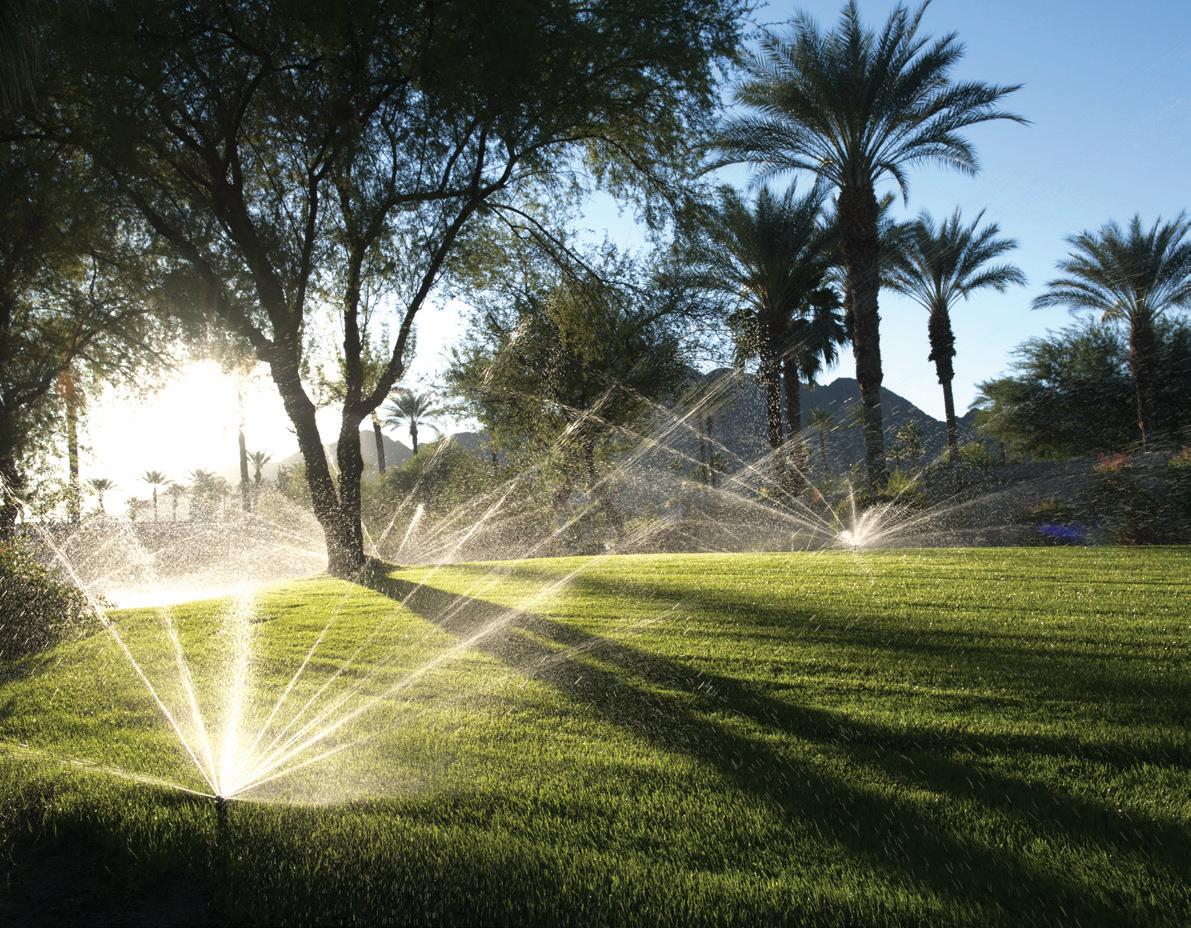
2 minute read
FEATURE ARTICLES
Replacing worn out or inefficient sprayers can lead to water savings of up to 30 per cent.
Replace inefficient sprayers
Advertisement
✔ Water savings of up to 30 per cent Old, worn out or inefficient sprayers can be the source of poor water use efficiency. A simple upgrade to more efficient sprayers can result in water savings of up to 30 per cent.
Convert areas to drip irrigation
✔ Water savings of up to 70 per cent For medians, narrow landscaping beds and planters, reducing turf and converting from sprays to in-line drip irrigation or point-source emitters can result in water savings of up to 70 per cent. Drip irrigation provides slow, even watering for coverage right where it’s needed, with no overspray onto the hardscape.
Slow the flow – regulate the pressure
✔ Water savings of up to 50 per cent Install pressure regulators to achieve the optimal pressure for sprinklers, emitters, and valves. This saves water lost from misting and runoff.
Other ways to save water
Check the system. Inspect irrigation systems for leaks, clogs, wear, and other damage that can silently waste litres of water. At a minimum, adjust sprinkler nozzles to eliminate overspray onto hardscapes. Modify the space. Be selective with turf areas. Keep turf only where it’s practical and use a grass that’s regionally appropriate. Replace thirsty plants with native and drought-tolerant plants. Remember to add mulch to reduce evaporation and moderate soil temperature.
The bottom line
By adopting some or all of these solutions, you will see significant savings in water use and play an active role in water conservation for generations to come. A recently released report by Aither for the Victorian Government updates its 2019 analysis of the impact of increased permanent horticulture plantings on water supply and demand in the southern Murray-Darling Basin.
Its key messages about future water demand were: • In the southern MDB (excludes the Murrumbidgee River and the Lower Darling), during periods of extreme dry water availability, where there is no carryover from the previous year, demand from existing permanent horticulture plantations could be 200 GL less than water available for consumptive use. • In the lower Murray, during periods of extreme dry water availability demand from existing permanent horticulture plantations could outstrip within-region water supply be two and half times. • In average to extreme dry water availability scenarios, total permanent horticulture water demand could exceed total volume of water available for consumptive use.
Based on these scenarios, the report makes the very sensible suggestion that “Existing market participants, as well as new entrants, should be mindful of the material water supply risks in the connected Murray, and particularly the lower Murray”.
It also advises that water supply and demand trends should be monitored and analysed to ensure that policy makers, regulators and water users have access to the best possible data.
To download the report go to the Victorian Water Register website.
Water supply and demand in the southern Murray-Darling Basin (2020 update) An assessment of future water availability and permanent horticulture irrigation water demand

Afinal report prepared for the Victorian Government Department of Environment, Land, Water and Planning Wednesday 17 June 2020
FINAL REPORT| Water supply and demand in the southern Murray-Darling Basin (2020 update)

